The outbreak of World War ll in 1939 led to the Government announcement on 1st May 1940, that the new dock was to be built and work commenced in August the same year. It was to be built by reclaiming some 12 hectares of harbour between Garden Island and Potts Point. Overall, this would be the second biggest engineering task in Australia, bigger than building the Sydney harbour Bridge and second only to the Snowy Mountains scheme.
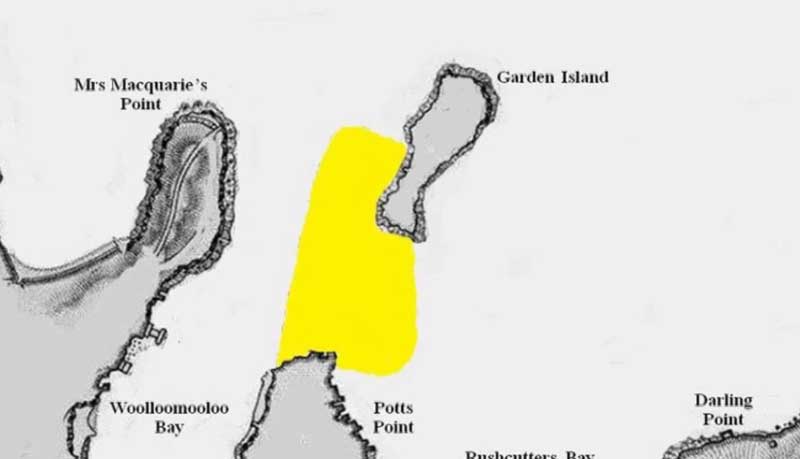
Two massive steel and sandstone coffer dams were built and when completed, the area was pumped dry. Further excavation of the harbour floor was undertaken using explosives. The unpaved tops of the coffer dam walls were quickly named by the workers – the one on the western side between the island and Woolloomooloo was known as the Khyber Pass, and the eastern side became the Burma Road.
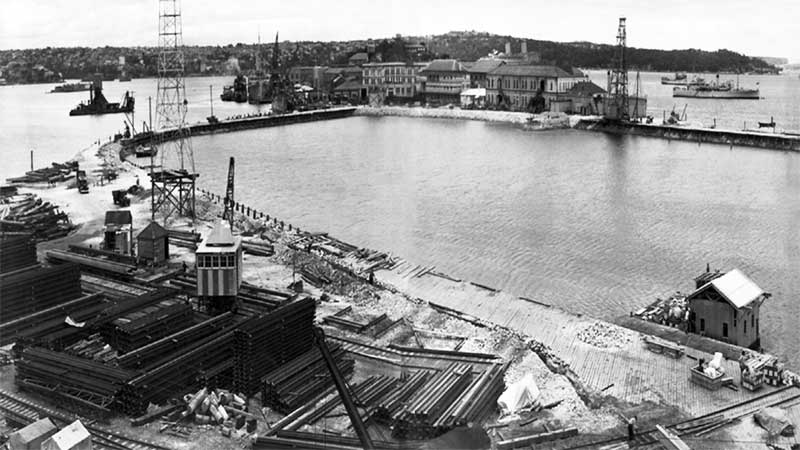
Whilst work on the nearly completed coffer dams continued day and night, Sydney was attacked by Japanese midget submarines on the night of 30th May 1942. Garden Island was hit by two torpedoes – one beached itself on the northern end of the island and failed to explode. The other hit the sea wall beneath HMAS Kuttabul, a Sydney ferry that had been commissioned to provide sleeping accommodation for sailors.
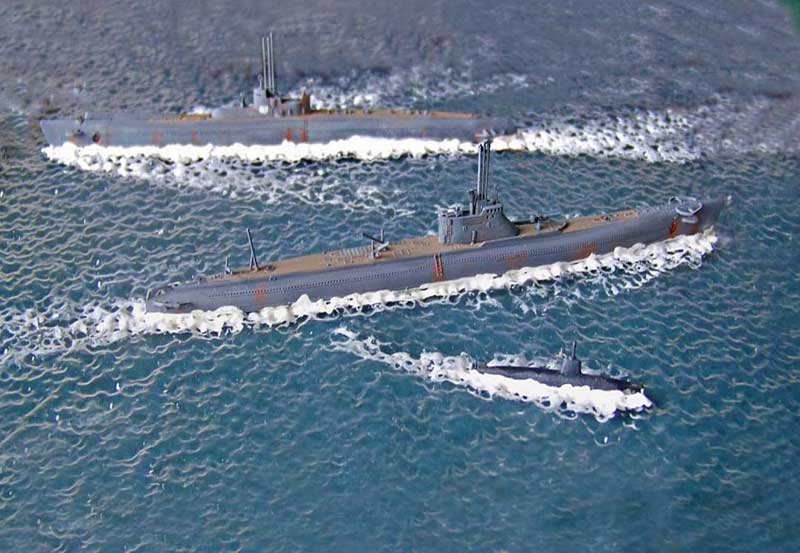
The torpedo exploded, breaking the back of Kuttabul and sinking her. 19 Australian and 2 British sailors were killed in the sinking. The submarine escaped the harbour only to be later scuttled off the Central Coast, north of Sydney. Full details of the event are provided in the Heritage Tour DVD available from the Society shop. The Garden Island naval base was renamed HMAS Kuttabul in memory of the event.
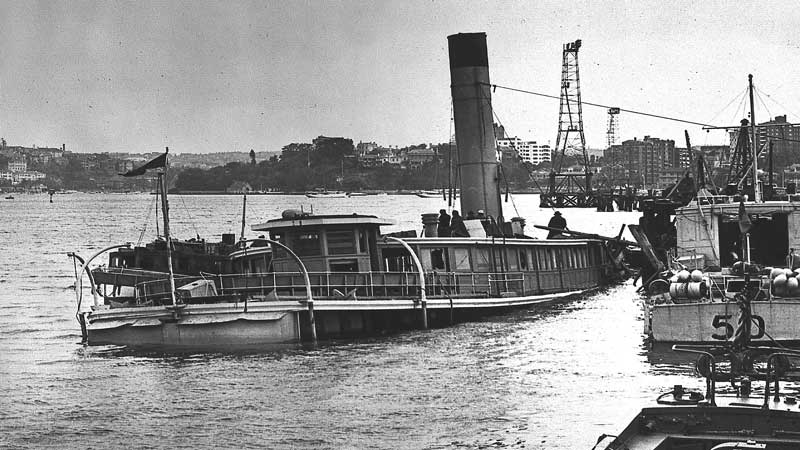
The coffer dam was completed by December 1942 and construction of the dock commenced. Its dimensions are huge: 345 metre long (about three football fields end to end) and 45 metres and 14 metres deep. It holds almost 260 million litres of water or about 87 Olympic swimming pools. Its pumps can empty the dock in about four hours – they would empty the average home pool in about 7 seconds.
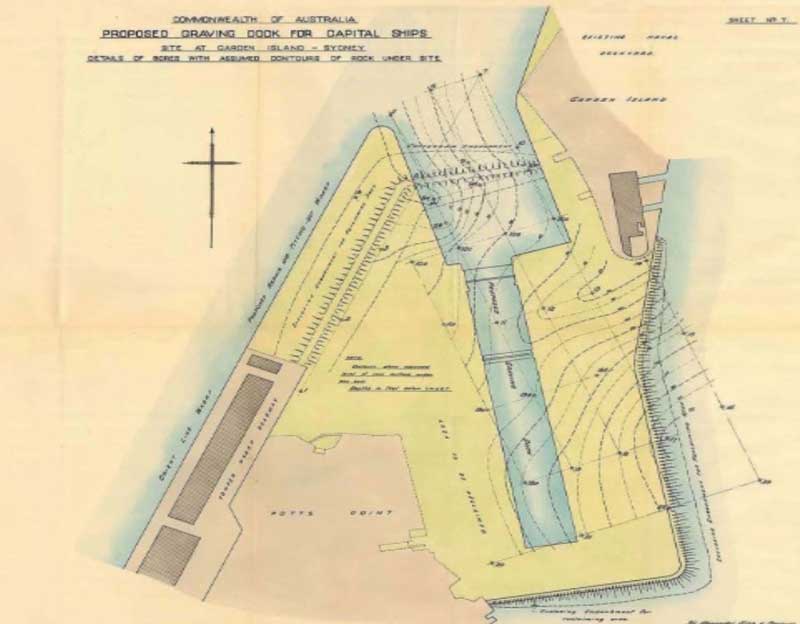
Construction was completed in late February 1945 and was the largest graving dock in the Southern Hemisphere. Why a Graving Dock?
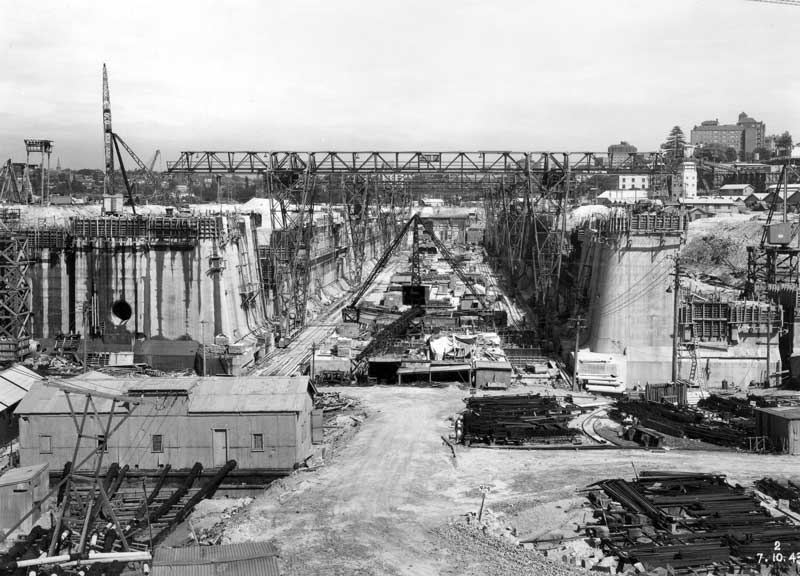
In the days of sail, a ship was careened out of the water and the hull cleaned of all fouling material. It was then sealed with pitch to make it watertight. This work under the ship was called “graving”. Today we just call them dry docks.

The first ship to use the dock was HMS Illustrious, then in urgent need of repairs. This was in early March 1945, a couple weeks before the official opening on the 24th March 1945, when the Governor General’s wife name it as the Captain Cook Graving Dock. It has been in constant use ever since, handling docking of ships from both the merchant marine and the Navy. It is a major Australian strategic asset
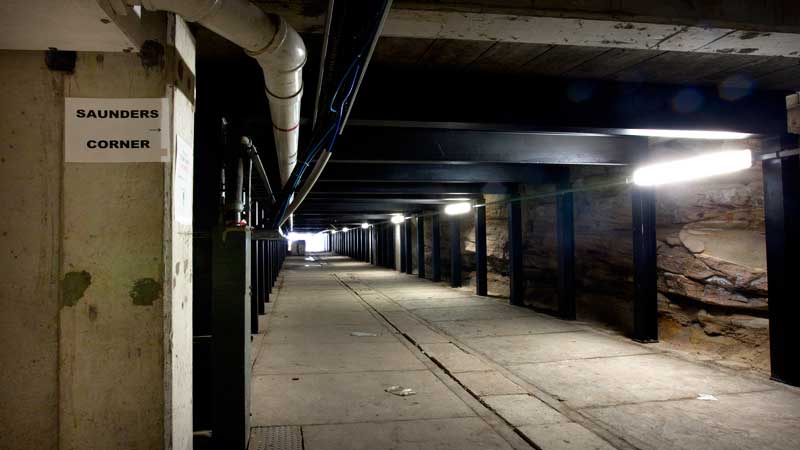
Full details as to its construction is contained in the Captain Cook Graving Dock DVD available from the Society shop. The DVD also contains other videos and material related to the docking of ships in Australia.

With the attack on Sydney by the Japanese, tunnels were cut into the northern hill for use as shelters and the maintenance of base operations. A telephone switchboard, toilets and bathroom facilities were provided, along power generating equipment and a first aid centre. The tunnels are still there, but not currently in use.
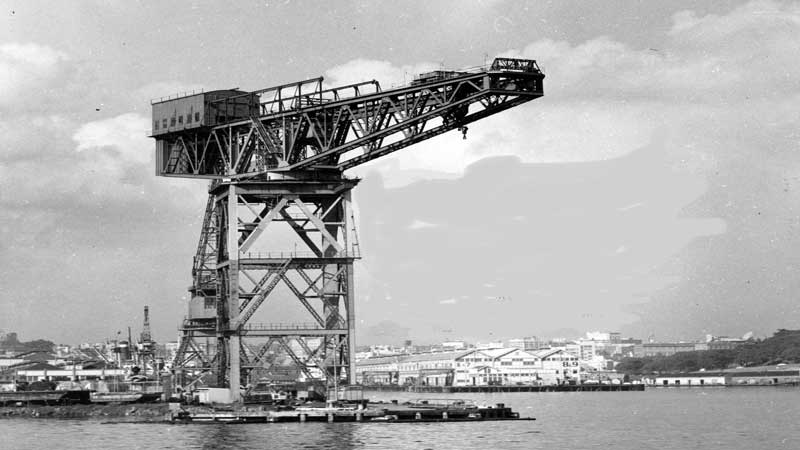
In late December 1944, some 300 ships of the British Pacific Fleet berthed in Sydney, the largest collection of warships in the one place ever in Australia. Many Australian ships were included in the Fleet that operated out of Sydney in the closing months of the War.

With the completion of the Captain Cook Graving Dock, there was the need for a crane able to lift the gun turrets, boilers and engines from the larger warships. There had been a 250-ton cantilever crane in the Royal Navy Base in Singapore, but this was destroyed in 1942 to prevent it being used by the invading Japanese.
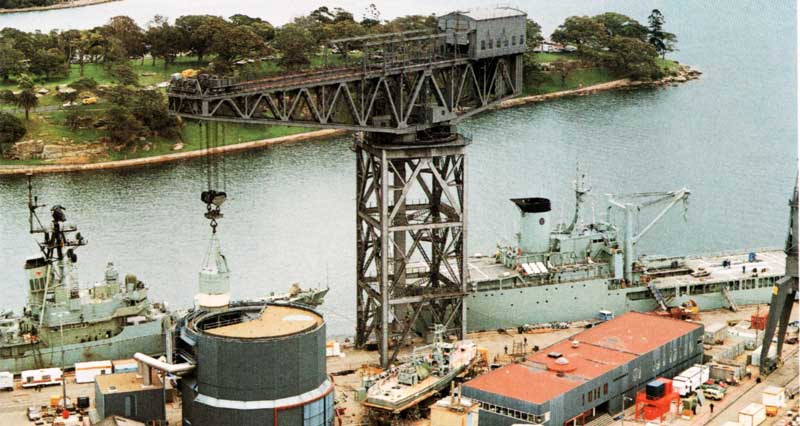
The plans for the Singapore crane were sent to Sydney where it was decided to build a replica on the new fleet wharf at Garden Island. Construction started in 1944 and the crane came into service in 1952. It lifted many loads, including steam engines, power generators and complete ships. Because of its striking shape, this type of crane was commonly referred to as a Hammerhead Crane.
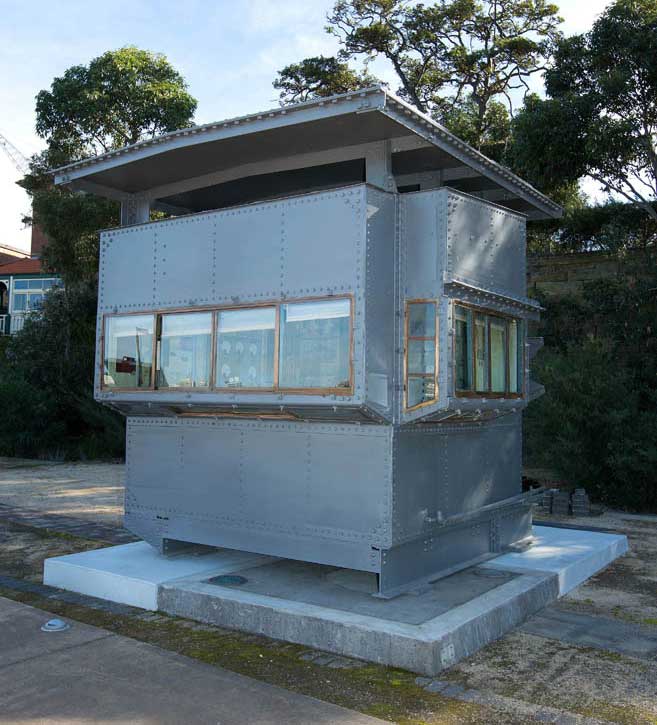
With the addition to the fleet of the DDG Class Destroyers which carried surface-to-air missiles, a special building was erected adjacent to the crane to provide service and support for the missile weapon. The weapons were lifted from the ship and then lowered through the roof of the new building.
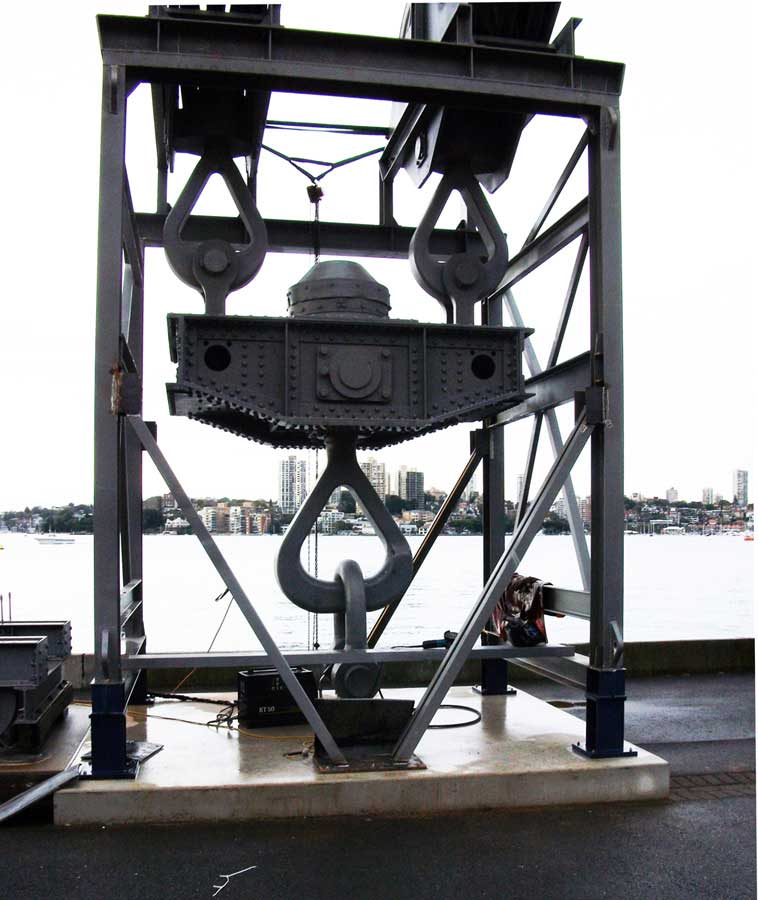
The crane ceased operation in 1996. It remained in place with protective barriers to catch any parts falling off the deteriorating unit whilst consideration was given to its future. With to need for increased wharf space for new, larger ships, the crane was demolished in 2014.
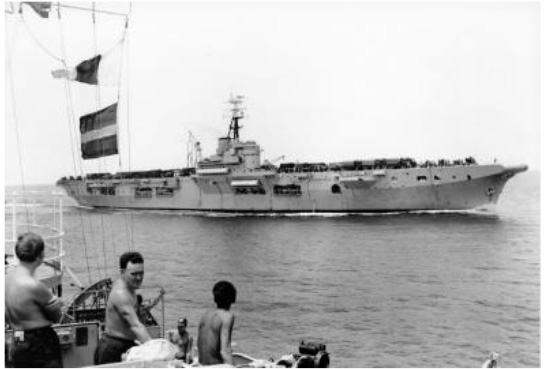 Such was the interest in the crane, several parts were refurbished and placed on display in the public area of the Navy Heritage Centre on Garden Island.
Such was the interest in the crane, several parts were refurbished and placed on display in the public area of the Navy Heritage Centre on Garden Island.

Full details and specifications are available for viewing in the Society’s DVD – visit the Shop for details.
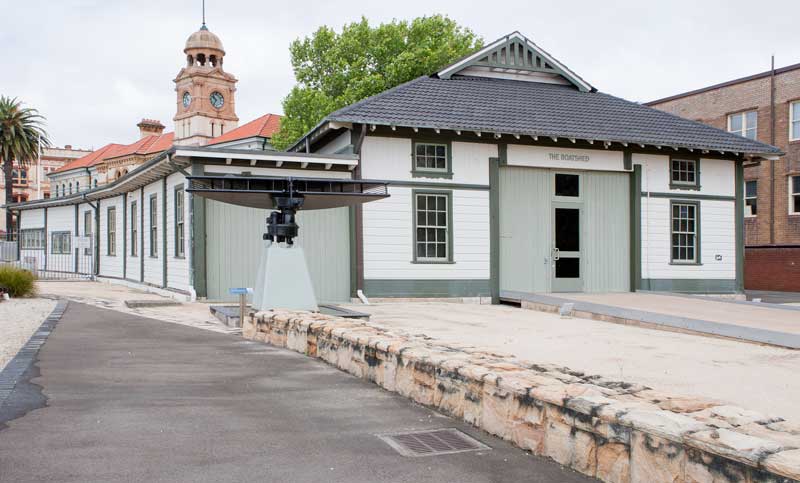
The Garden Island dockyard was operated by the Navy until 1959, when control was passed to Australian Defence Industries, During their tenure, one of the major achievements was the conversion of HMAS Sydney lll from an aircraft carrier to a troop transport. In this role, she was involved in the Vietnam War.
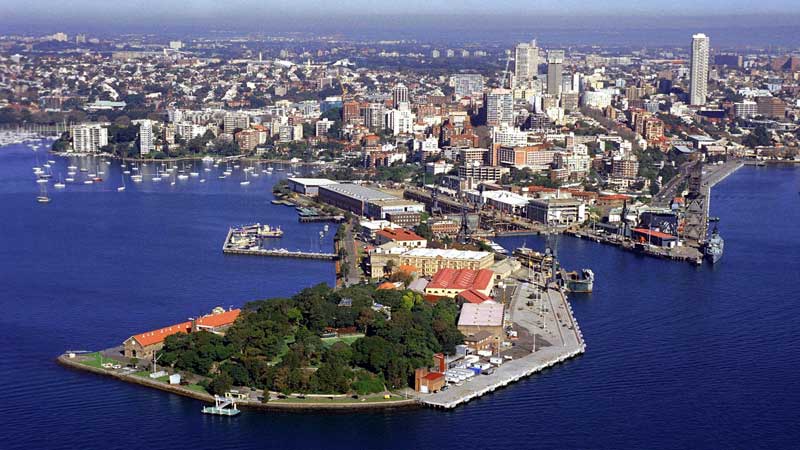
Dockyard management then transferred to Thales who continue to operate the Captain Cook Dock and its related facilities, providing major maritime services.
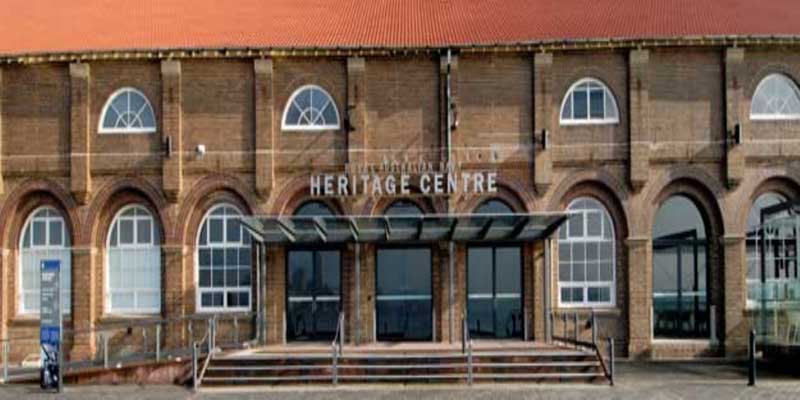
Garden Island continues to develop in keeping with defence demands for the Royal Australian Navy. Changes to the Fleet requires changes to berthing, maintenance and support facilities. Providing space for bigger ships such as the new LHD’s require changes to wharfs and shore side facilities. This also requires that it is also maintained as a very secure area.
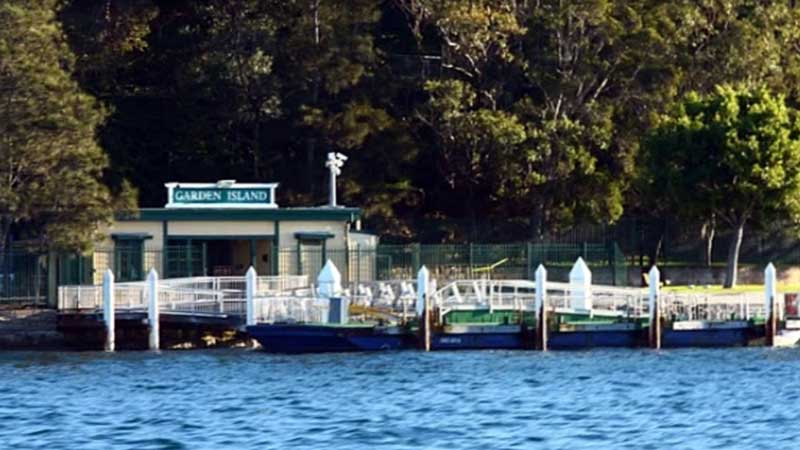
The original Boatshed built in 1856 was later replaced by a new, larger boatshed on the eastern side of the Island in 1888-89, complete with a slipway. It was then replaced in 1896 with a demountable building and an additional slipway. Later expansion of the island saw boatshed facilities moved up river, and the building, still called the Boatshed, remains today, used by both the heritage Centre and The Naval Historical Society
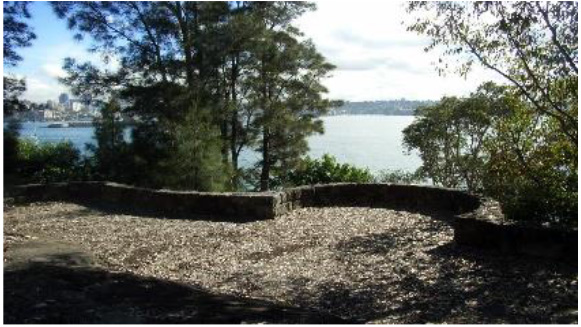 Part of the northern hill has been made available to the public. This area contains the Signal Station, the Navy Heritage Centre and provides free BBQ and picnic facilities. It is a great place to sit, relax and view the Harbour.
Part of the northern hill has been made available to the public. This area contains the Signal Station, the Navy Heritage Centre and provides free BBQ and picnic facilities. It is a great place to sit, relax and view the Harbour.
Access is by ferries operating the Circular Quay – Eastern Suburbs route.



